Americans on the Western Front - 100 Years After the Guns Fell Silent
Explore the historical landscapes of the Western Front, honor American soldiers, and plan your journey through WWII battlefields in Picardy.
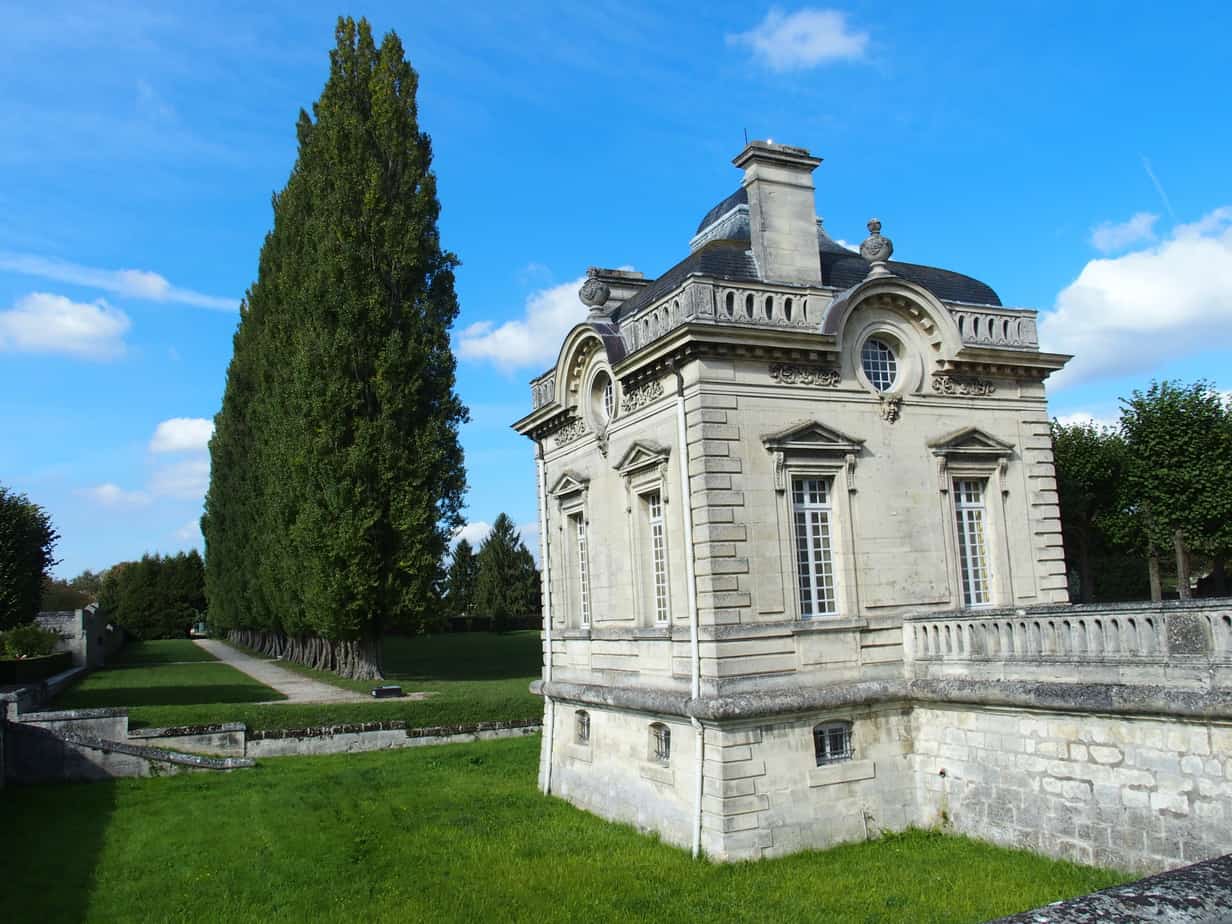
The Western Front stretched from the English Channel to Switzerland. By 1917, the 700 km of terrain between these two landmarks had been pulverized by three years of war. America had been affected by having its ships sunk, but had been spared the devastation and tremendous loss of life experienced on the ground in Europe. But on April 4, 1917, America declared war and began mobilizing troops to engage in the ‘war to end all wars.’
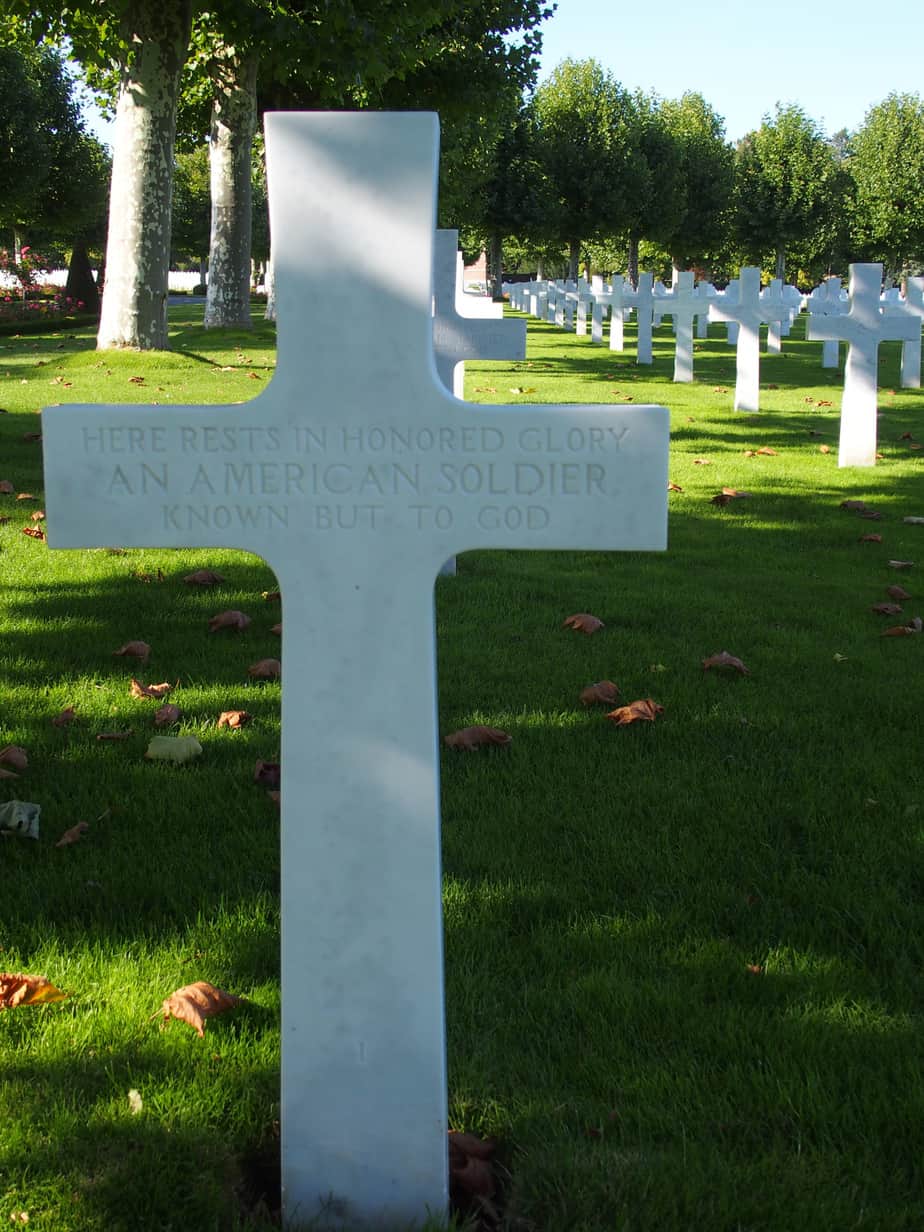
The land ravaged by World War I was mostly rural. Forests and fields now again cover the trenches and shell holes and most, but not all, of the villages, were rebuilt. Larger towns such as Soissons and Château Thierry were largely destroyed by years of shelling and fighting as they changed hands several times over the course of the war. They too have been restored, though memories of the devastation are preserved in local museums.
In 2018, one hundred years after the guns fell silent on the Western Front, memorial services will be held on or near the battlefields where US troops fought. The American Battle Monuments Commission (ABMC), which maintains 18 cemeteries and monuments in France devoted to the First World War, is scheduling ceremonies for the centennial. The ABMC website is a helpful tool for planning a visit to be a part of this commemoration.
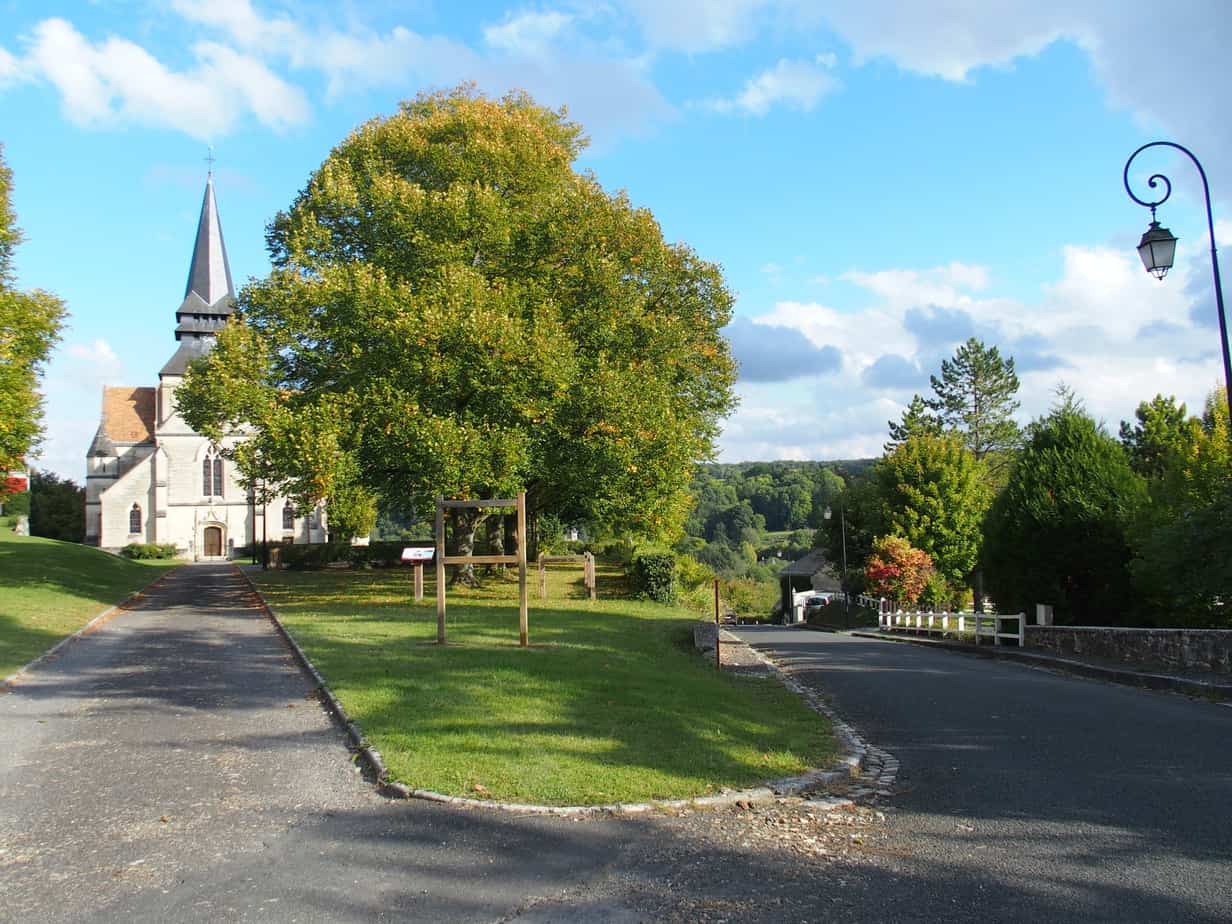
We set off for the regions north and east of Paris, known as Picardy and Aisne, on a three-day tour where American doughboys were sent one hundred years ago.
Three Day Itinerary
Driving from the Paris’ Charles de Gaulle Airport to the area where the American soldiers fought can be done in forty-five minutes to two hours, depending on your destination. There is service by train as well to cities from which a car can be rented. Driving in France is not particularly challenging though it is advisable to learn the road signs. The flexibility of having a car will reward visitors with the ability to operate at your pace and to wander the countryside at leisure if desired. This is the region where champagne is produced, hence the diversion of a tasting is frequently available on these roads.
American troops saw action on the Western Front primarily in that part of France just north and east of Paris. It is here where the Second Battle of the Marne, Belleau Wood, Château Thierry and Saint Mihiel took place in 1918.
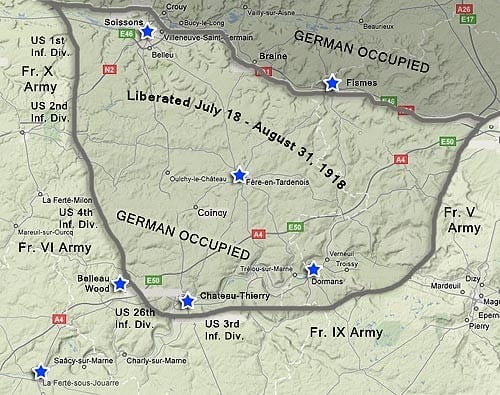
Planning Your Trip
There is a well-developed website, Aisne 14-18 Le Cenetaire, dedicated to the 100th anniversary – or cenetaire – of events in the region. It provides an excellent starting point for planning a trip and is in both English and French. I used the materials on the website supplemented with those gathered from Tourist Offices in the area when planning our visit. The site has ample material, including maps with detailed itineraries, to provide self-starters and seasoned travelers the necessary information to chart a course through the battlefields and monuments.
The IGN Great War 1914-1918 map provides an overview of the area and is useful for locating places of interest. It can be purchased online. They were on display in many stores and tourist offices. It may be more practical to purchase this map in France. A GPS or a more detailed map of the area will be a helpful supplement for finding your way. We found the IGN map to be a great battlefield map but a not always efficient roadmap.
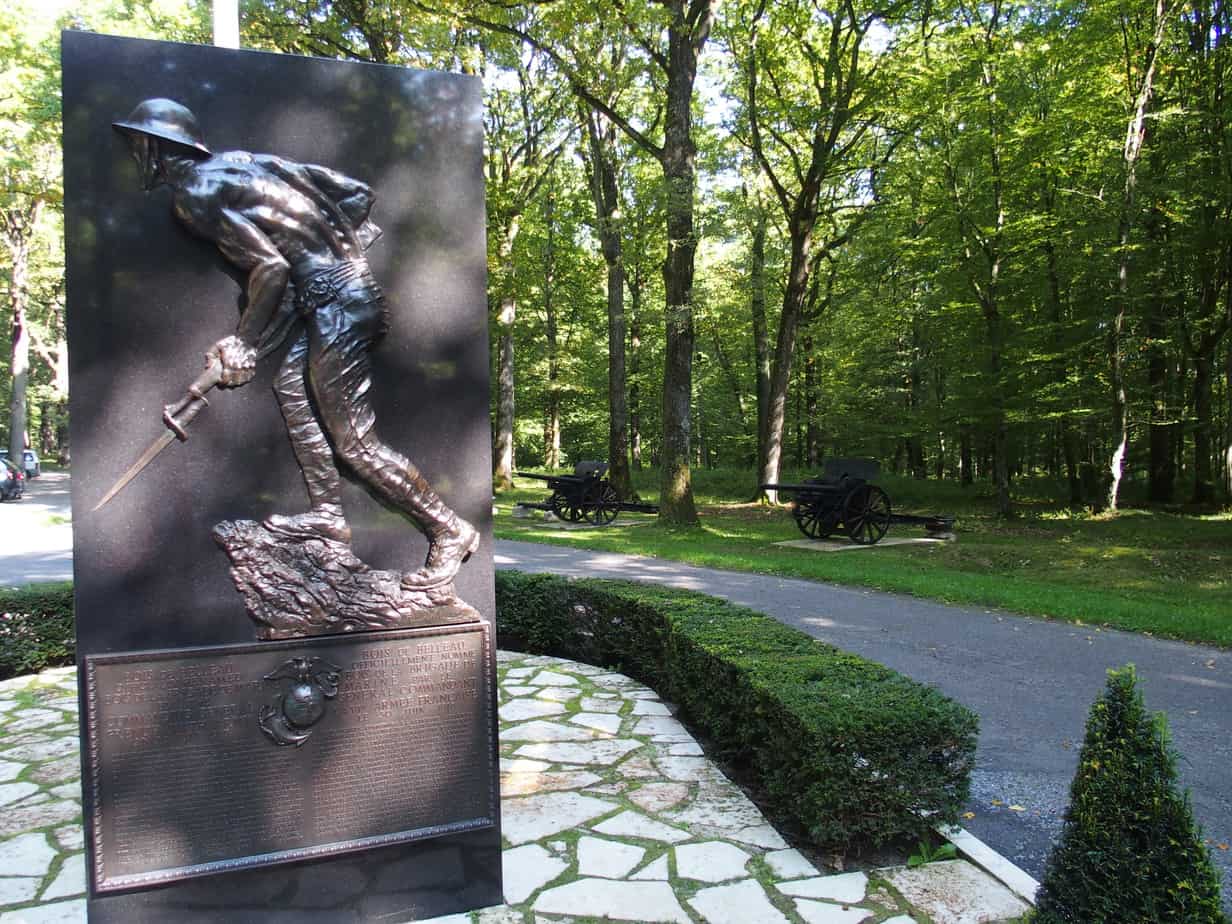
Companies and individual guides specializing in World War I battlefield tours can enhance the experience of those wishing to learn more than what is available in guidebooks. There are experienced guides identified on the Aisne 14-18 website and in literature available through the Tourism Offices in the region.
The seemingly innocent lanes one passes without knowing the significance of the woods beyond, with the bits and pieces of battle which remain therein, bear testament to the struggle and are revealed during an escorted visit. A knowledgeable guide will take the curious off the beaten path to return with stories of the heroism of individual soldiers and a unique perspective of the battlefield. Mike St Maur Sheil of Battle Honors Tours provided us with detailed maps and directions for understanding the Battle of Belleau Wood which was invaluable during our visit.
Musée de la Grande Guerre – Meaux
The city of Meaux is less than one hour from the Charles de Gaulle airport northwest of Paris city-centre. Meaux provides a convenient first stop to spend the night and get beyond jet lag prior to a driving tour of the American battlefields. The Musée de la Grande Guerre contains one of the most comprehensive exhibitions of World War I memorabilia in the region.
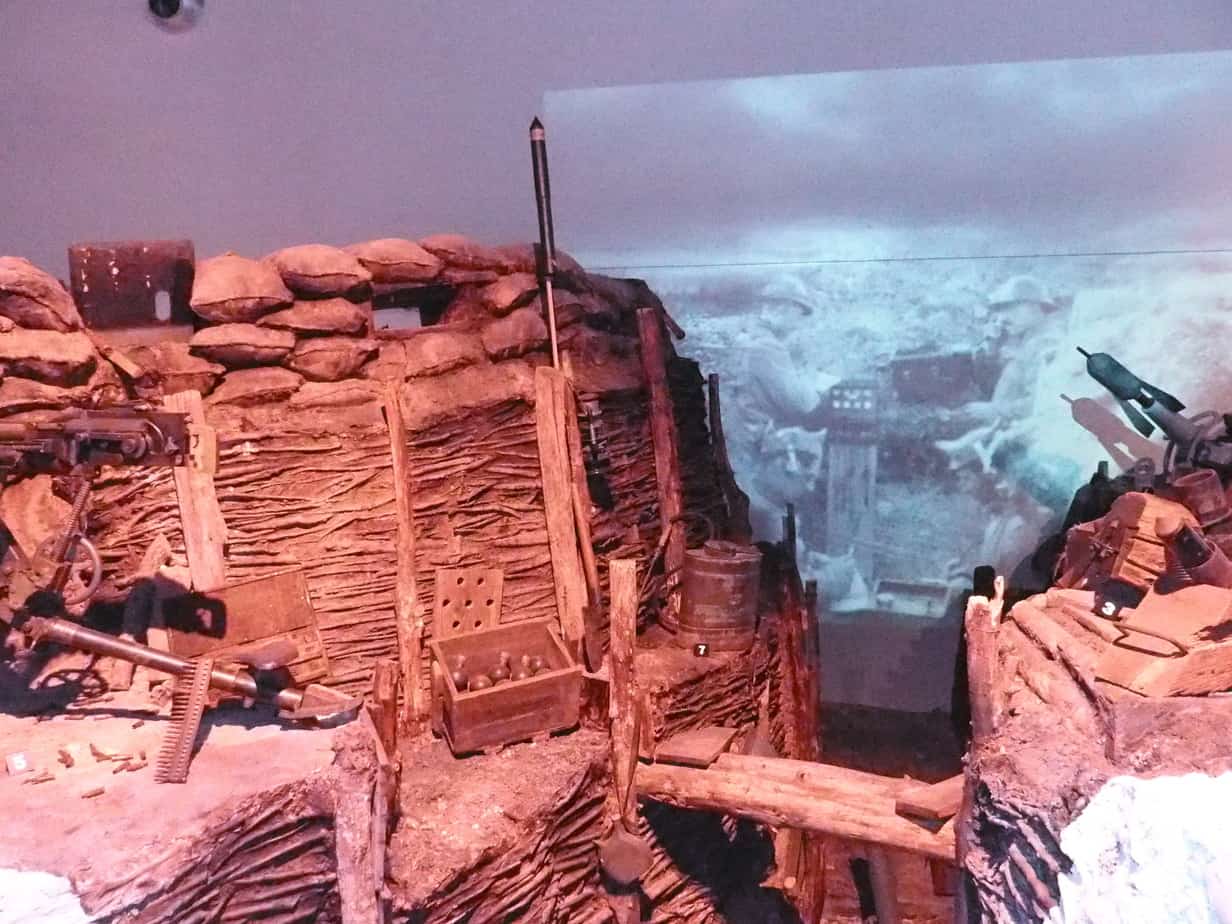
The museum, which opened in 2011, displays uniforms and artifacts as one would expect to find in a World War I museum. In addition, visitors experience the sensation of the war from a mock-up of a trench system complete with the sounds of war and footage of actual combat running simultaneously on three walls – some quite graphic. There are planes and vehicles on display, as well as a section devoted to the deprivations civilians suffered in Europe during four years of war. One could linger beyond the three hours we spent in the museum.
Establish a Base for Operations
Travelers not wishing to live out of suitcase by moving often will find many options for establishing a base to which to return after a day’s venture into the history of the regions of Aisne and Picardy.
We spent the first night in Meaux to get our feet on the ground and put jetlag behind us. We then moved on having decided upon a property on a hill looking over the Forêt de Retz in the hamlet of St. Pierre Aigle. Like most villages in the region, it was completely destroyed during the war then entirely reconstructed. St. Pierre Aigle is noted as the jumping off point for the first assault by Renault tanks in 1918.
The building now housing La Couronne, the bed, and breakfast, or chambre d’hotes, where we returned to each afternoon formerly served as a hotel and the village épicerie. The tranquility of the setting and the hospitality of Pierre-Alexandre and Pascal offset the pace we managed to keep during our three-day visit.
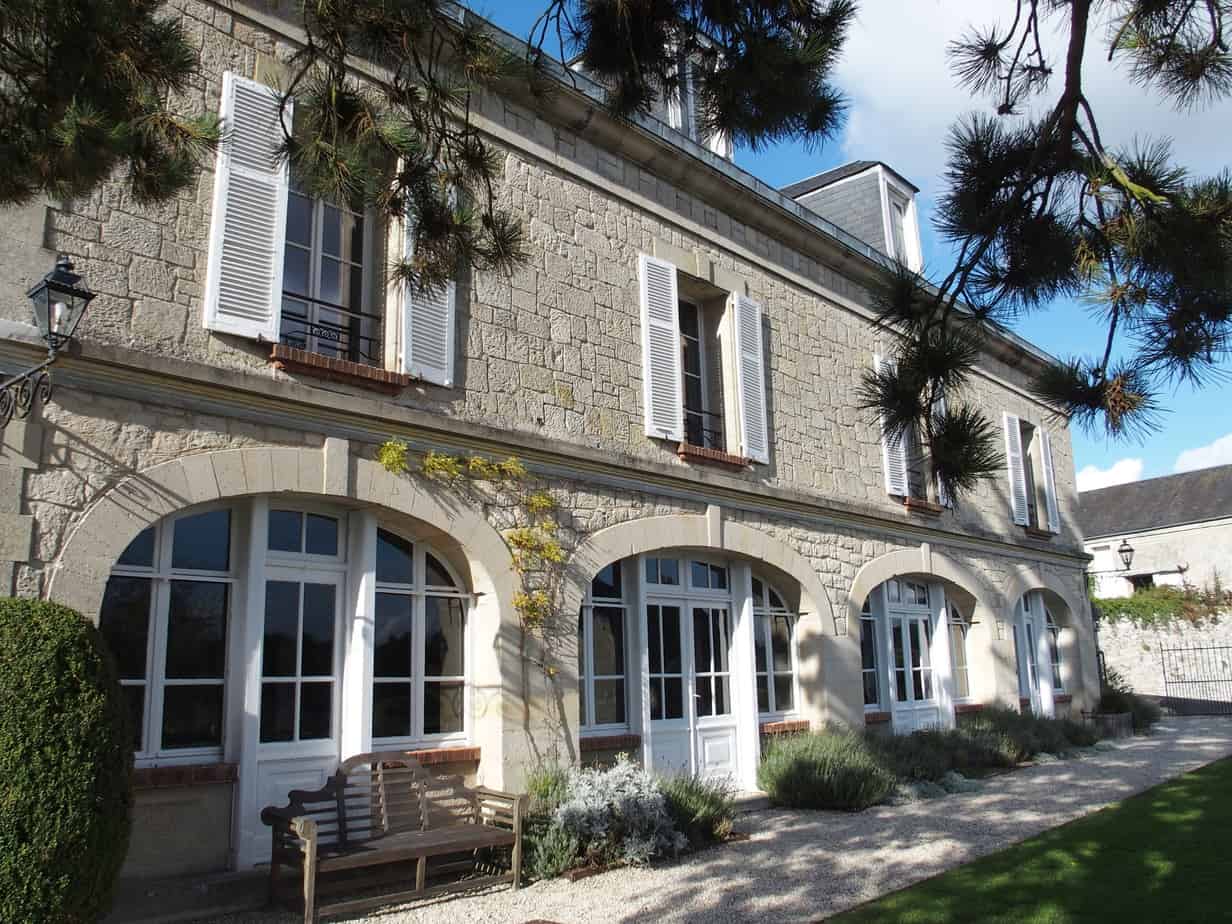
After a sumptuous breakfast served by our hosts before the dining room fireplace, we ventured in a different direction each day, though never more than two hours out. We planned our return for late afternoons during this unusually warm fall to relax with a glass of wine in the garden overlooking the forest. Several dinners were taken at the nearby Hotel de l’Abbaye in Longpont and there were a variety of restaurants in Soissons, a fifteen-minute drive from La Couronne.
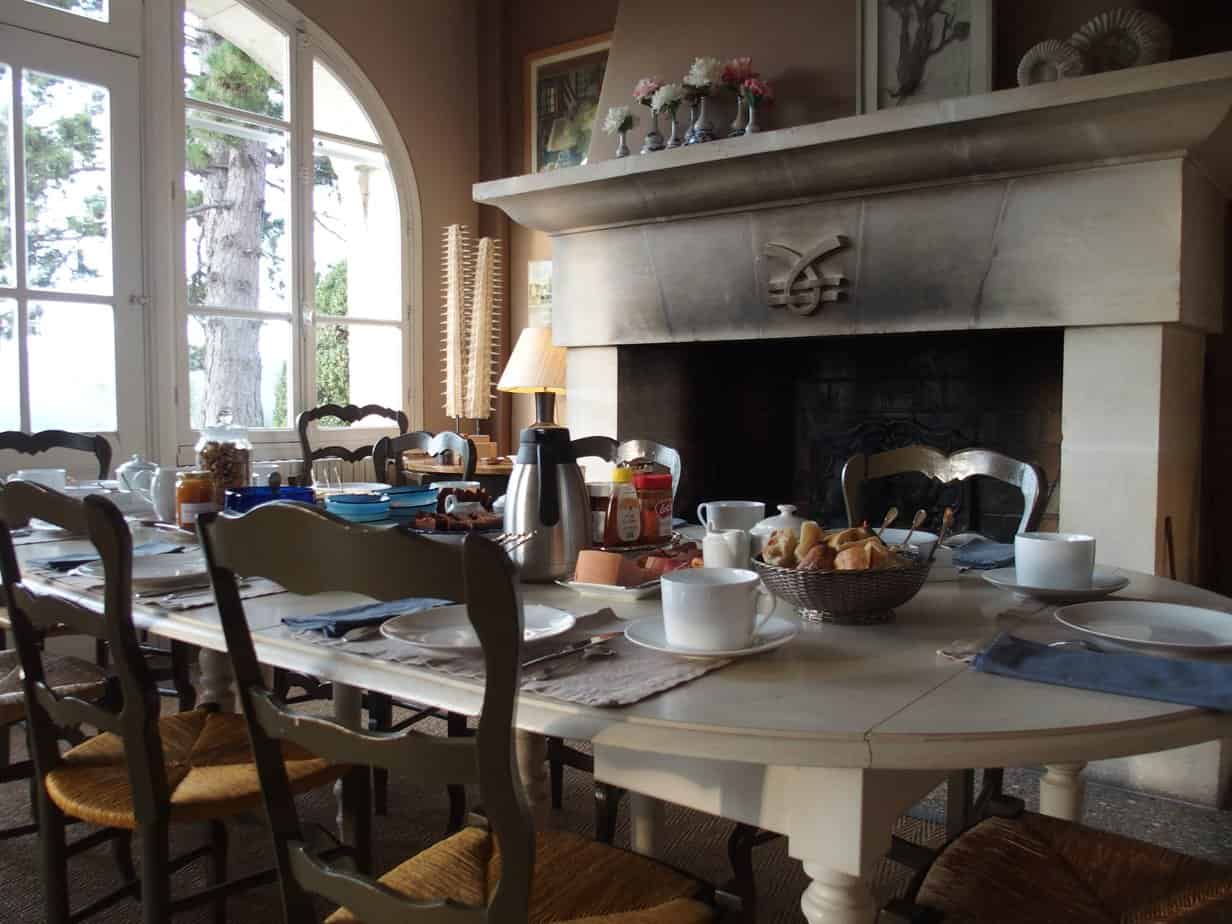
American Cemeteries and Monuments
The forty-five-minute drive from St Pierre Aigle to Belleau Wood traverses beet fields and thick forests. The sugar beets were piled high along the roads as we wound our way through the countryside. One hundred years ago this land was occupied by the Germans, a part of the salient as they pushed toward Paris. Nearby, American troops once staged for battle to protect the capital from capture. There is virtually nothing in the area that is more than one hundred years old as the entire countryside, crops, trees, and structures were leveled by the armies.
On June 3, 1918 two American divisions arrived near Lucy le Bocage to organize for an attack on the German salient. The battle for Belleau Wood began the next day and waged until June 26th, when it was signaled that ‘Woods belong now entirely to the US Marine Corps.’ The area was the scene of fierce fighting as American troops, both Army and Marines, were strafed with machine gun fire as they crossed the open fields before the elevated Bois Belleau. Ultimately the woods were reduced to a state of pockmarked land and broken trees by the shelling. Today the forest bears testament to the fighting as craters, foxholes and the clear outline of trenches are evident along the path.
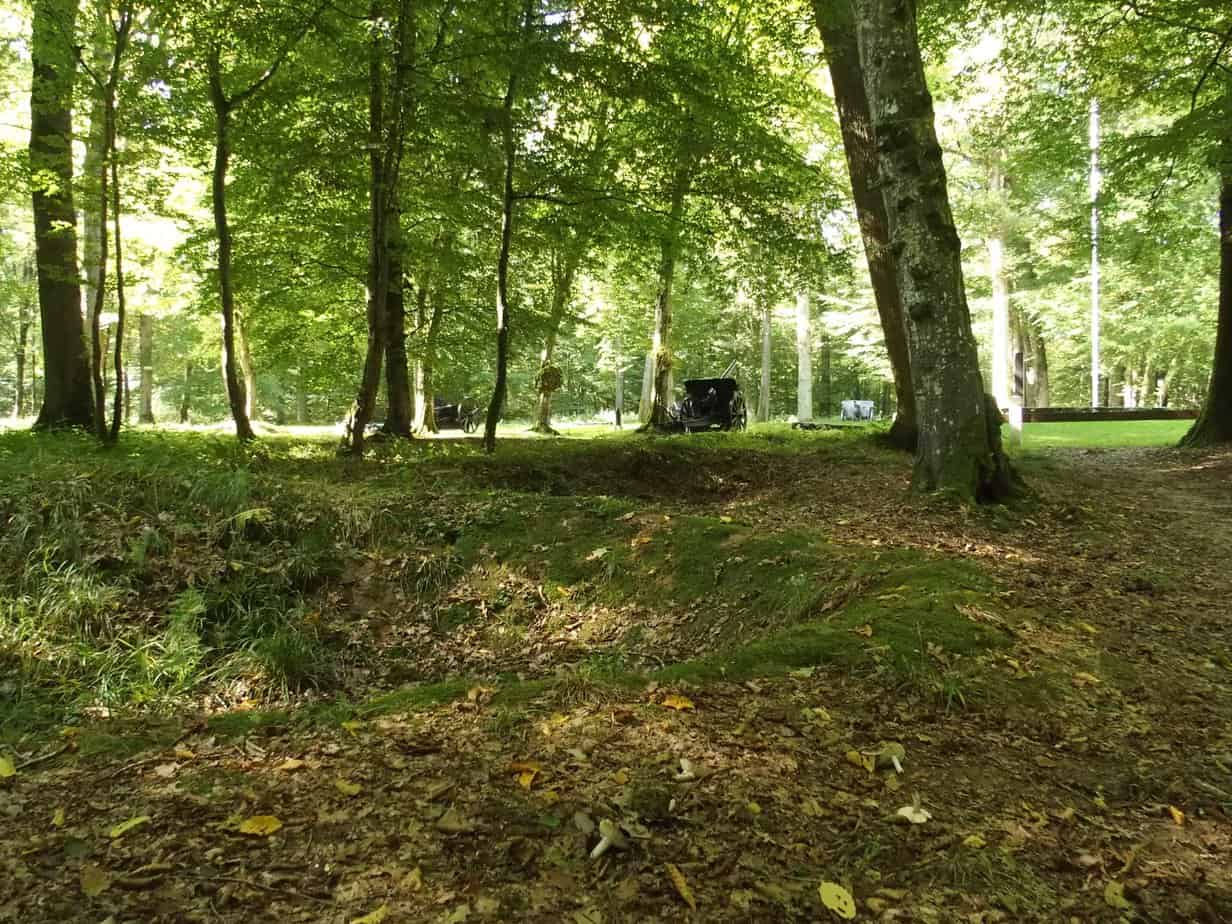
The American Cemetery Aisne-Marne at Belleau is located on a hill outside the town of Belleau at the end of the famous woods where the battle took place in the summer of 1918. There lie the remains of 2289 soldiers and lists the names of 1060 missing in action, all who gave their lives in this region in 1918.
We spent Sunday morning driving slowly through the rolling hills, hiking the woods and visiting the cemetery. The topographical maps and commentary provided us by experienced guide Mike St Maur Sheil provided us insight and detail about what happened 100 years ago in June on the ground we were walking.
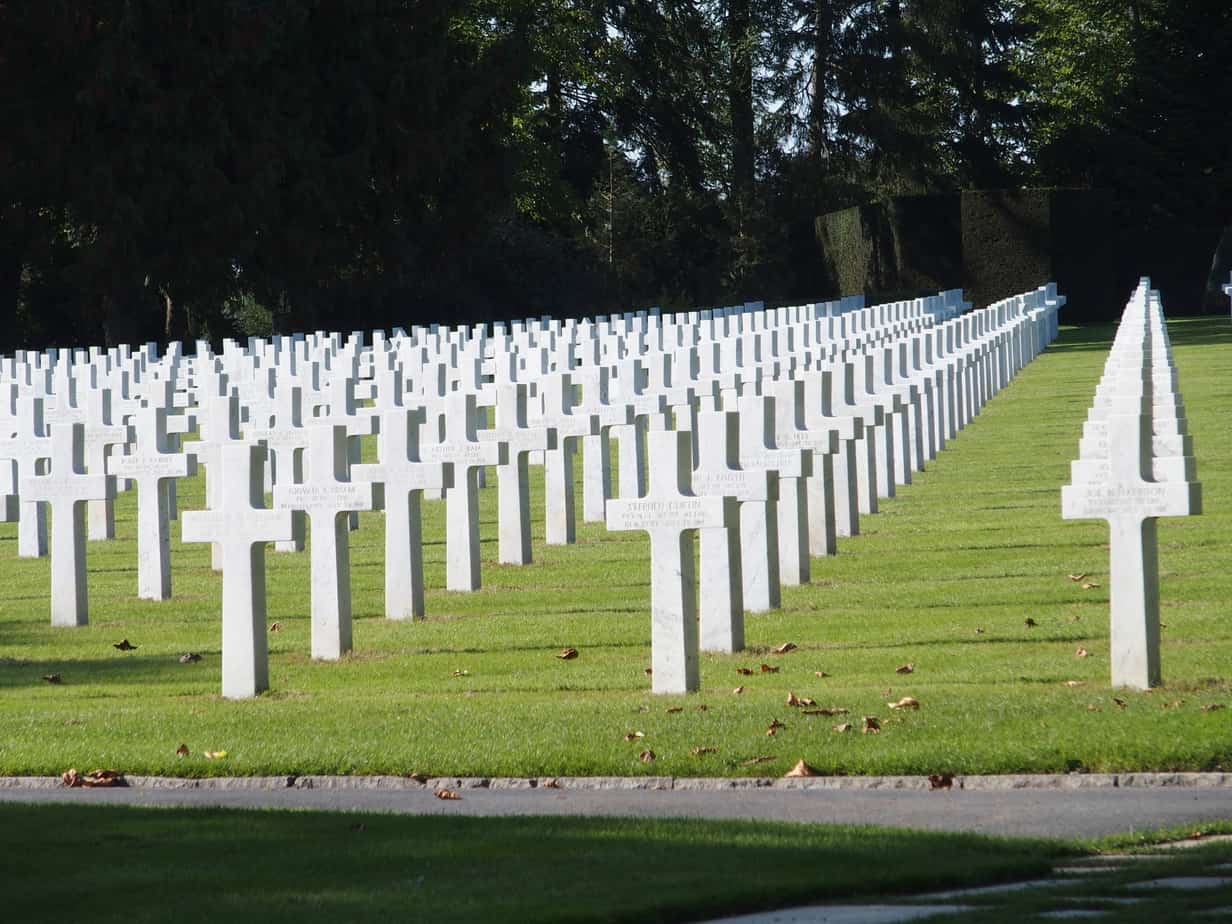
Unfortunately, the American memorial on the summit of Cote 204 is in the midst of renovation so we could not visit. It is a few minutes drive from the cemetery at Belleau. Hopefully, it will again be open as visitors arrive for the commemorations in the summer of 2018.
The town of Chateau Thierry, which sits on the southside of the Marne, is where American troops repelled German attempts to cross the river en route to Paris. There we had a leisurely lunch before taking to the road again.
Commemorative Sculptures
Leaving Chateau Thierry north on the D-1, our destination was Fère-en-Tardenois to see the monument to the Rainbow Division. Located across from a cornfield, next to the ruin of a wall, the only remaining structure of the Croix Rouge farm that was once here is this moving monument sculpted by James Butler.
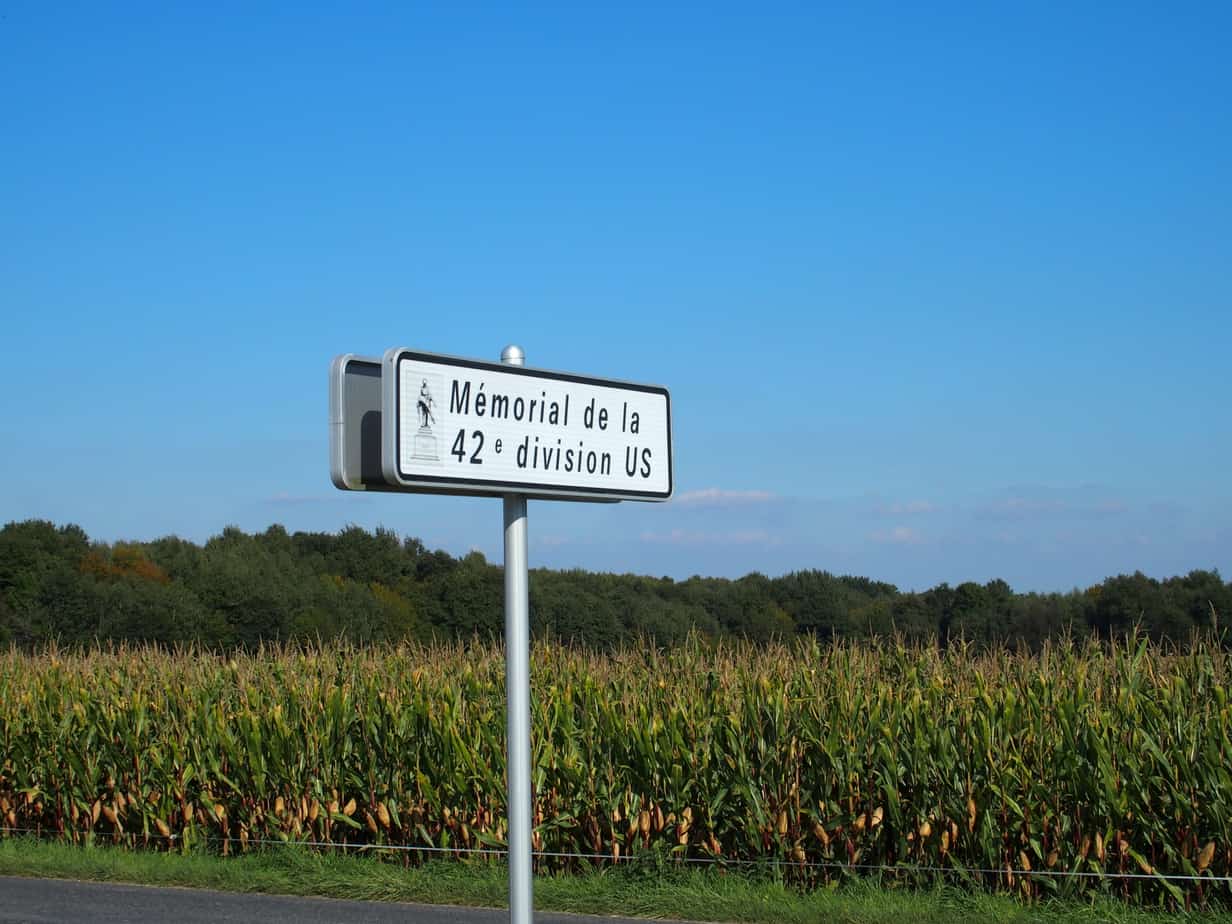
The 42nd Infantry Division that distinguished itself at the Croix Rouge farm in July 1918 was comprised of soldiers from the National Guard units hailing from 26 states and the District of Columbia. It was thus named the Rainbow division.
Butler’s sculpture was inaugurated in November 2011 and depicts a sergeant, carrying the limp body of his comrade in arms. The work reflects precision and exquisite detail in the uniforms and weaponry of his subjects. The memorial’s serene, pastoral setting on a warm autumn day seems a fitting tribute to the sacrifice these men made one hundred years ago.
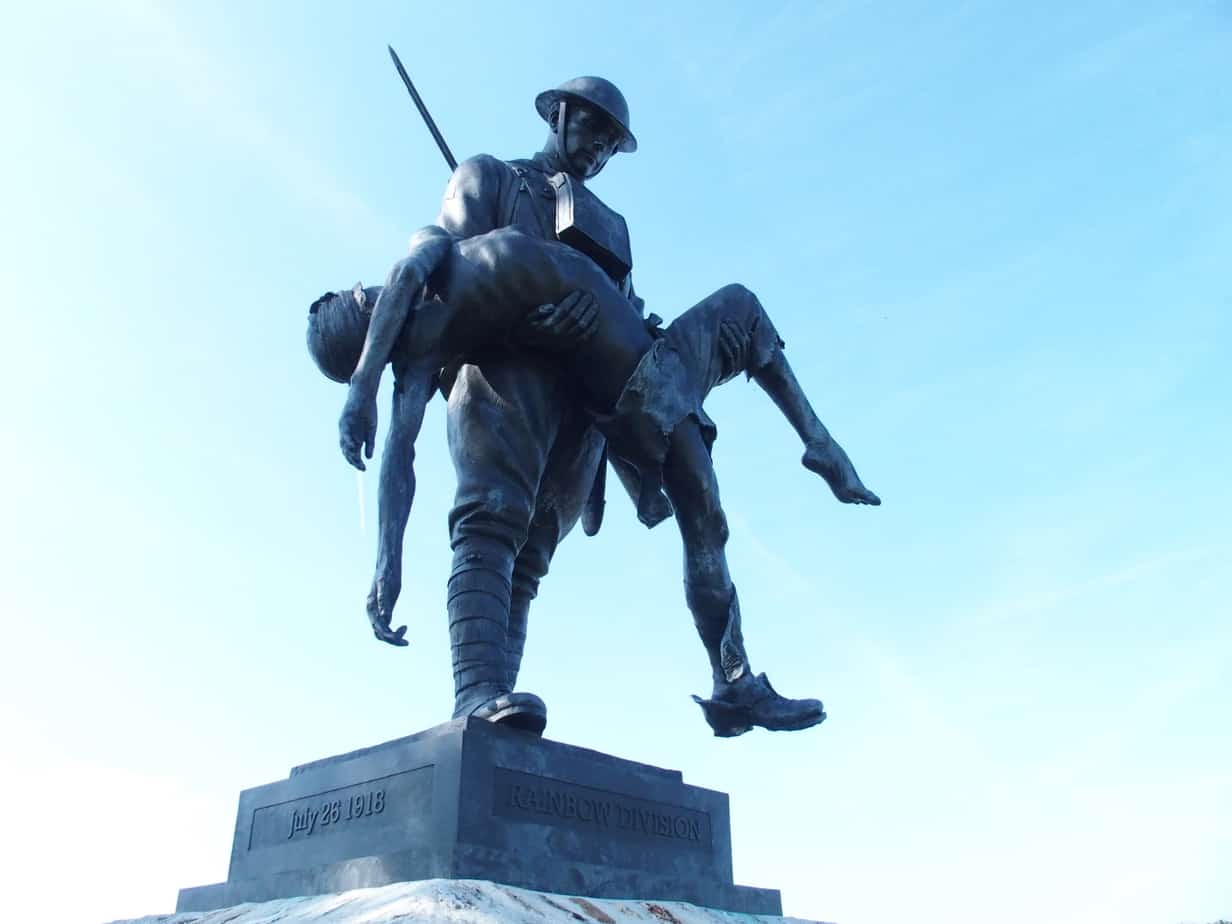
The Oise-Aisne Cemetery is also situated near Fère-en-Tardenois, though the distance driving on these small roads is a bit farther in life than appears on the map. There are 6,012 souls buried on this thirty-six-acre site. Among them rests the poet Joyce Kilmer, killed in battle just south of the cemetery. In the chapel, the names of 241 soldiers whose remains were never recovered are listed on the walls around the stone altar.
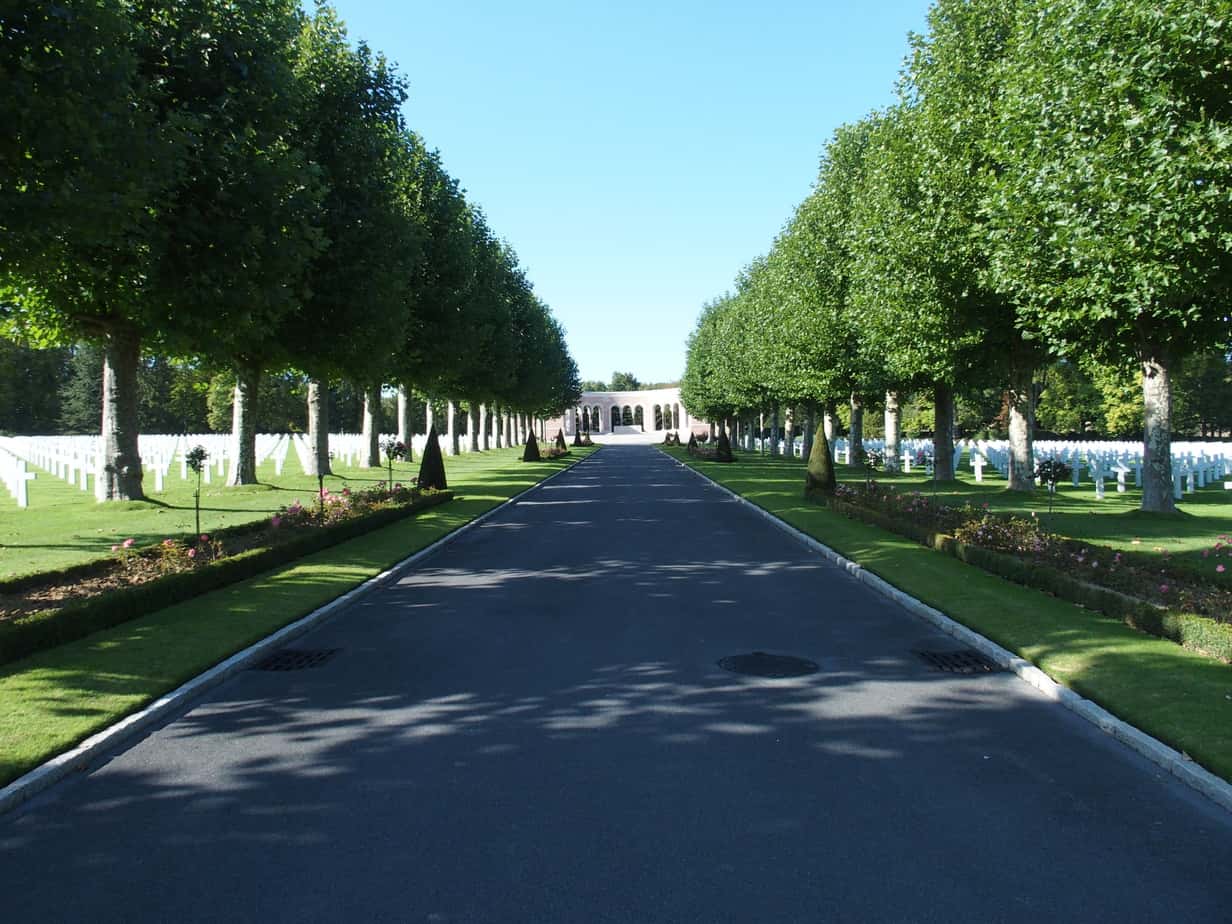
Our last stop of Sunday’s loop was Landowski’s Fantômes or Phantoms. Unveiled in 1935 this pink granite monument to the Second Battle of the Marne is found south of the hamlet Beugnuex, less than a thirty-minute drive from the Oise-Aisne Cemetery. Best known for his Christ the Redeemer statue that overlooks Rio de Janeiro, French sculptor Paul Maximillien Landowski created his Fantômes which is considered by some to be his masterpiece. The work depicts soldiers of various disciplines within the French army, protecting the figure of a young martyr rising above the battlefield.
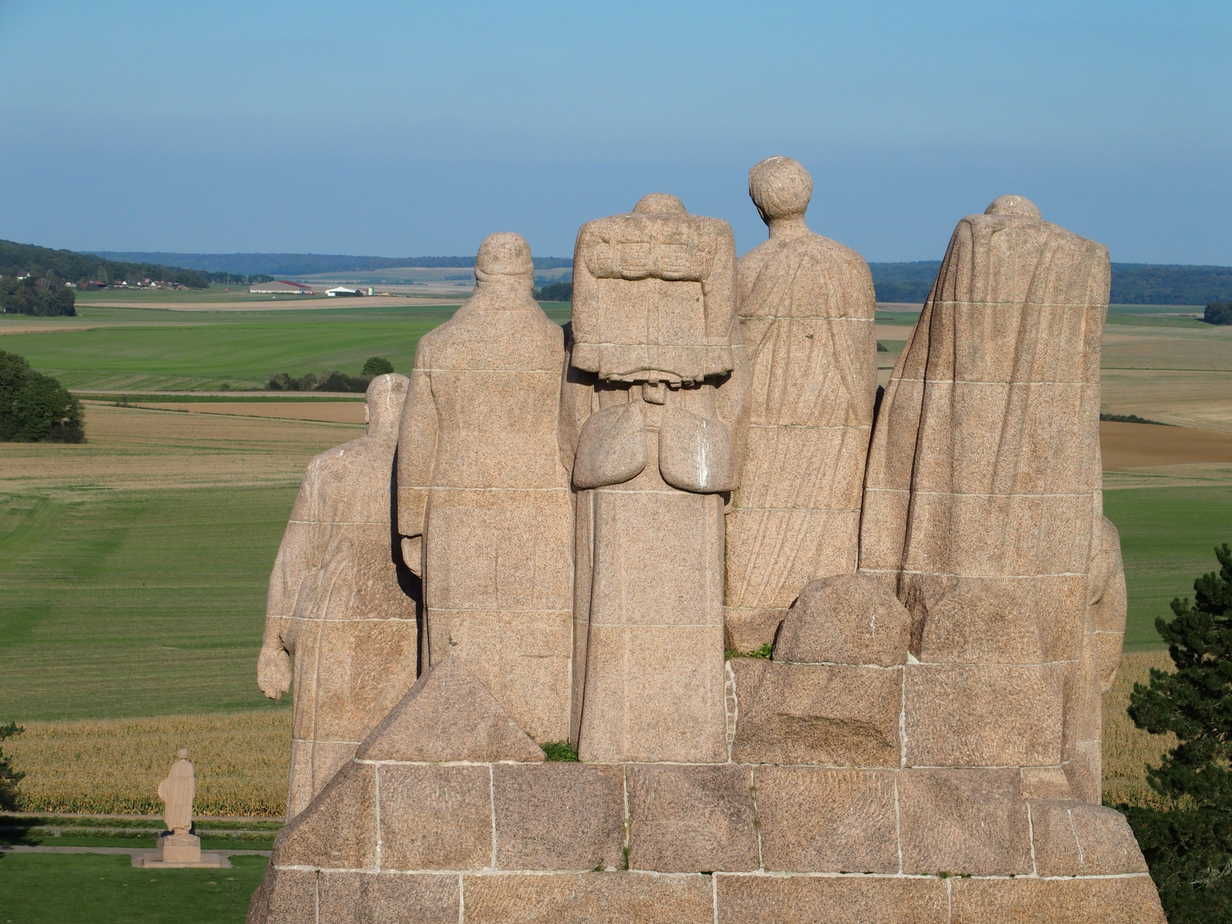
Landowski’s Fantômes are set atop a hill, the Butte Chalmont, overlooking the plain that was the scene of a decisive battle in July and August 1918. At this place American, French, British and Italian soldiers eliminated the German threat to Paris by retaking Soissons and the Paris-Châlons road.
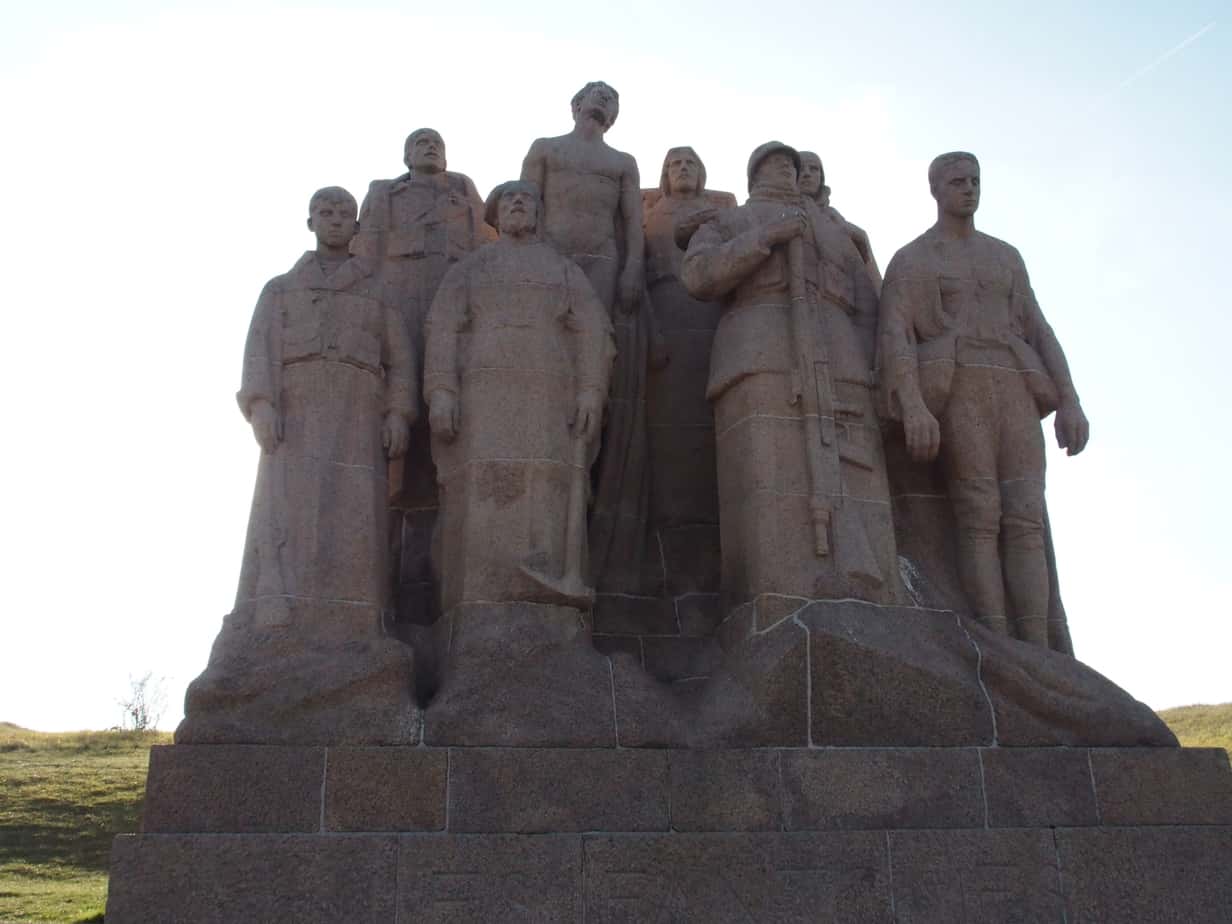
The Humanitarian Work of Anne Morgan
A short drive north and west of Soissons voyagers can discover the Franco-American Museum at the Château de Blérancourt. Unlike the trenches and scarred terrain of our battlefield tours, the gardens and museum at this site celebrate the longstanding friendship between France and America. The chateau’s connection to the Grande Guerre is due to the work of Anne Morgan and the American Committee for Devastated France.
Anne Morgan (1873-1952) was a daughter of the financier Pierpont Morgan and a Francophile having visited France many times in her youth. Morgan, with her friend a Canadian doctor Anne Murray Dike, founded the American Committee for Devastated France after witnessing the devastation and the displacement of the civilian population in Picardy. In this region about 70 miles north of Paris is the town of Blérancourt.
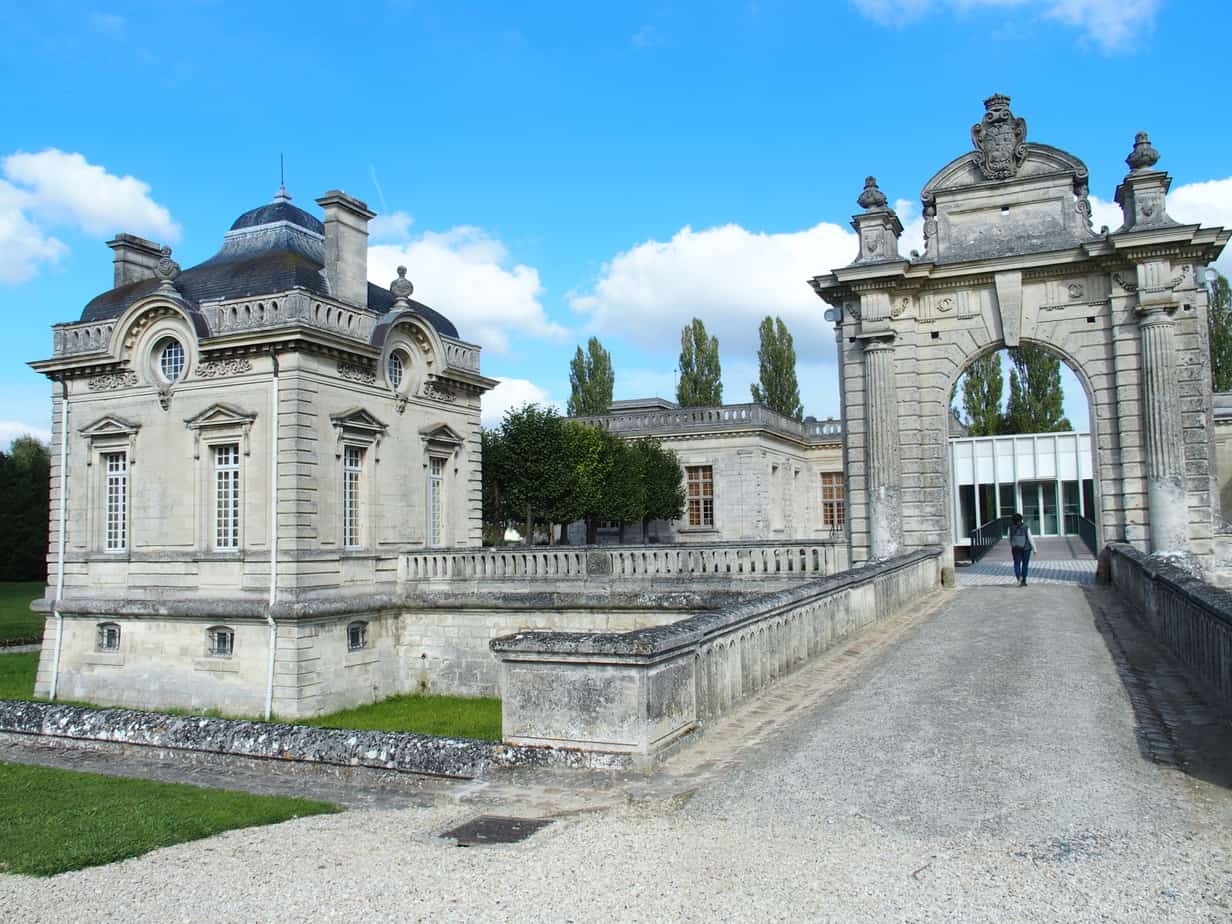
Morgan was traveling in France when the war broke out in 1914. She witnessed first hand the destruction and the impact on the civilian population. She returned to America and began raising money for wounded French soldiers and awareness in the States of the impact of the war.
The French wished to re-establish civilian life in the war-torn area. In July 1917 the commander of the French forces, General Pétain, assigned Morgan and her women volunteers to operate from the Château de Blérancourt, which at the time was only forty miles from the front lines. It was required that one speak French, know how to drive and have the ability to pay the expense of traveling to France to serve with the Committee for Devastated France. Approximately 350 women volunteered. At Blérancourt they lived among the population in barracks built by the French soldiers. They were close to the battlezone and their base was moved when the German offensive moved through Blérancourt, damaging the chateau.
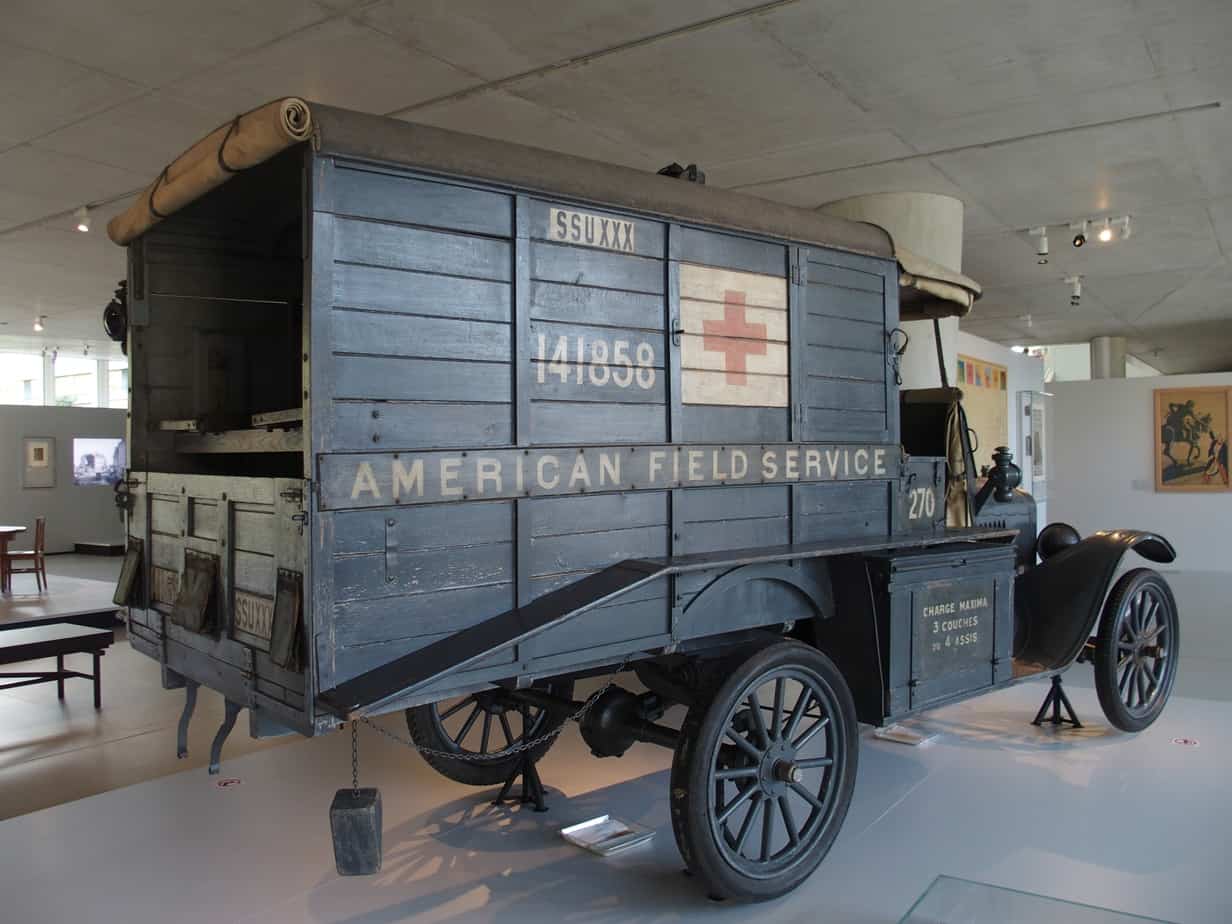
The Committee was committed to the humanitarian effort in re-establishing services to the region, which was considered to be nearly unsalvageable. Libraries and housing were constructed with the Committee’s assistance. Food, farming tools, clothing, and blankets were provided to the people of the region through the largess of Americans who donated to the Committee. It is a fascinating story of the involvement of American women in the Great War, beginning before the country’s troops had arrived at the war in Europe.
In 1924, Morgan purchased the chateau and today, the Château de Blérancourt is the site of the Franco-American Museum, a testament to the friendship between these countries. The buildings house a vast art collection, rare documents, and memorabilia, particularly from the Great War.
Planning Our Next Visit
Three days allowed us to only scratch the surface of the French terrain, ‘over there’, where young American men and women who answered the call one hundred years ago found themselves. Venues such as St. Mihiel, the Bellicourt Memorial and the battlefields of the Hindenburg Line among others have been reserved for another day. The centenaire in 2018 provides a good reason to wander the fields and forests of France. There is no substitute for standing on the ridges and in the woods where many thousand died to comprehend America’s involvement in the Grande Guerre.




